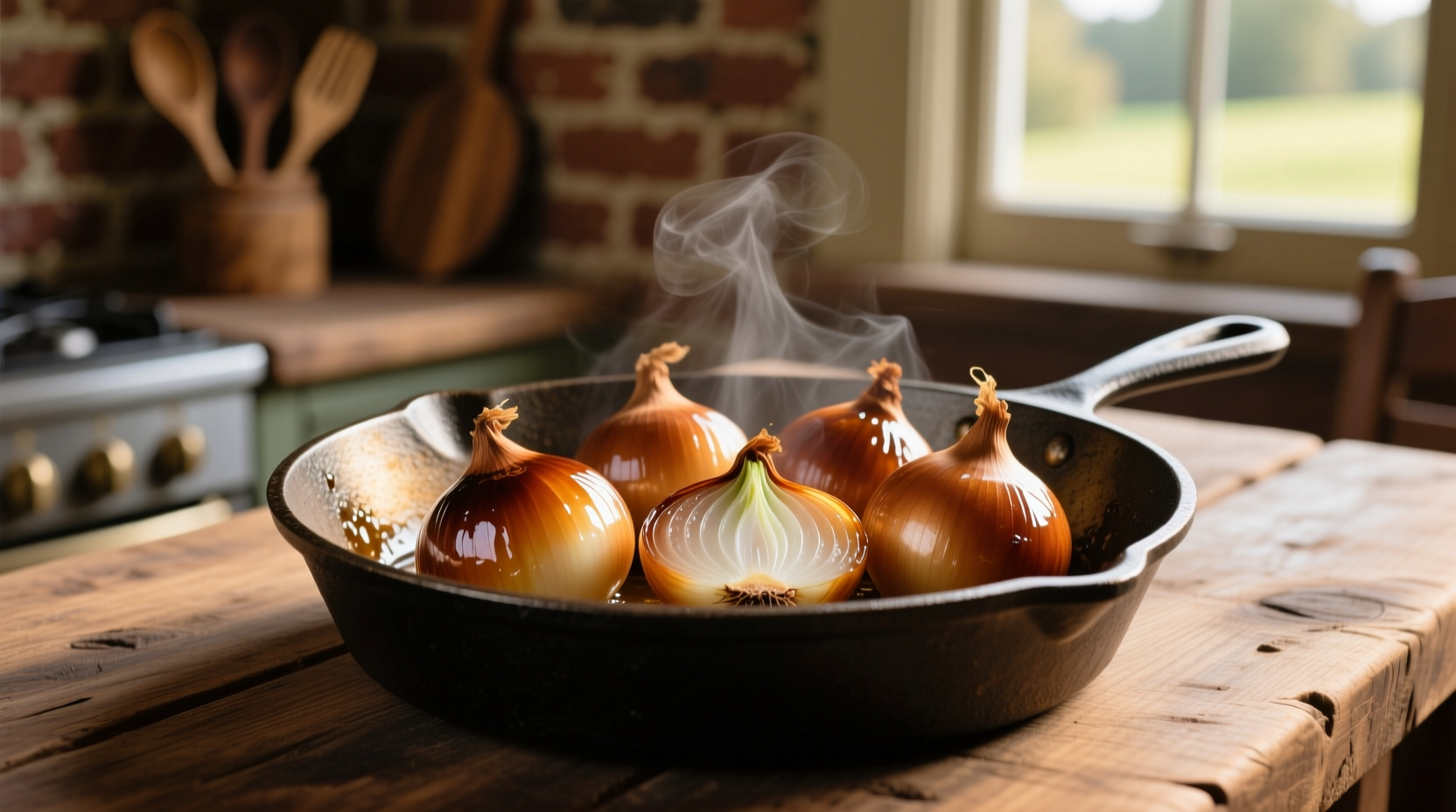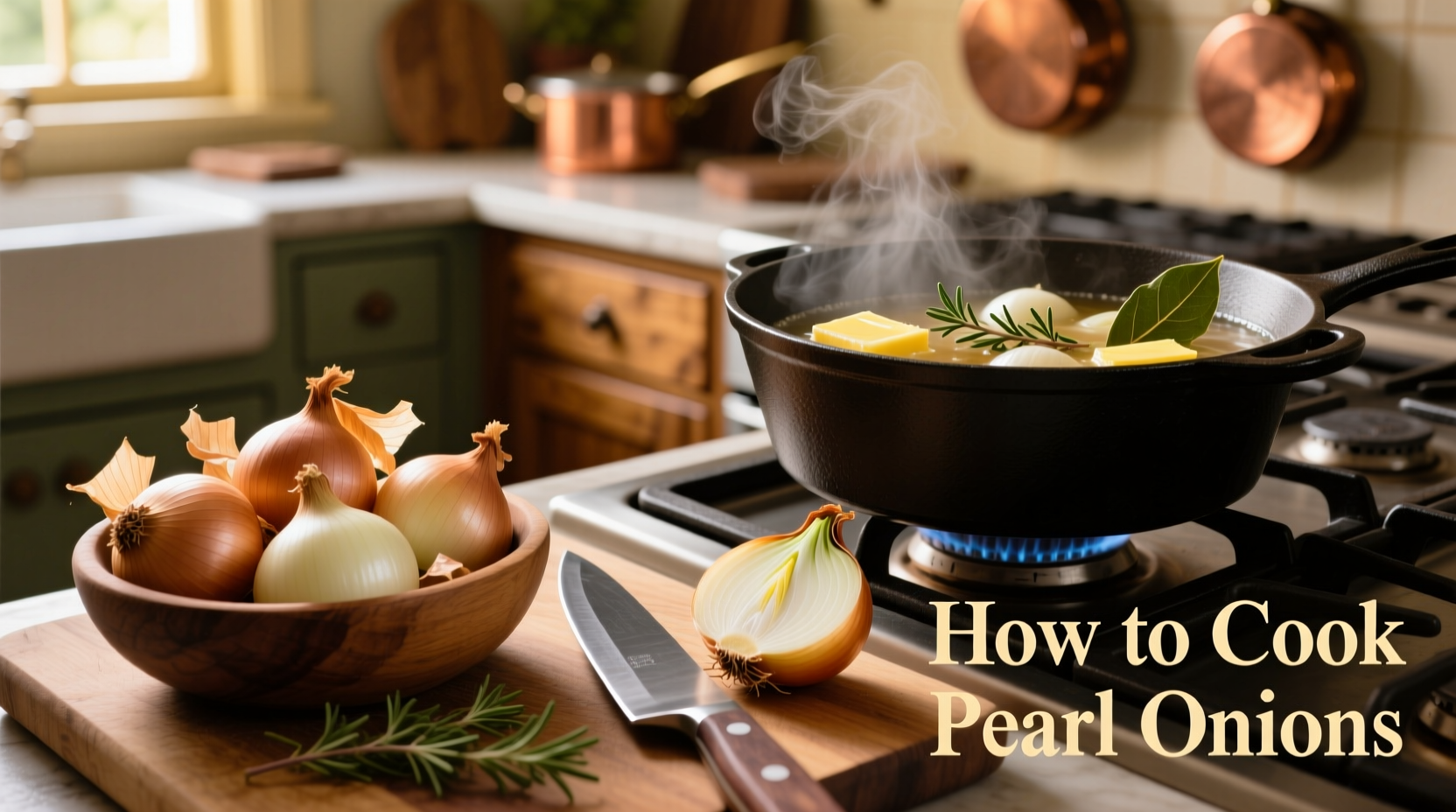Mastering pearl onions transforms ordinary dishes into culinary gems. These bite-sized alliums—typically 1-1.5 inches in diameter—offer a sweeter, milder flavor than regular onions without the sharp aftertaste. When cooked properly, they maintain their delicate shape while developing complex sweetness, making them ideal for elegant presentations in dishes like coq au vin, holiday roasts, and refined pickles.
Why Pearl Onions Deserve Your Attention
Unlike standard onions, pearl onions (Allium ampeloprasum var. sectivum) contain higher natural sugar content and lower sulfur compounds. This unique composition creates a caramelized exterior with a tender, almost fruity interior when cooked correctly. Professional chefs prize them for their visual appeal and ability to absorb flavors while retaining structural integrity—a quality verified by culinary research at the Culinary Institute of America's food science department.
Smart Selection and Storage
Choose firm, dry bulbs with papery skins free of sprouts or soft spots. Avoid any with visible mold at the root end. Store unpeeled onions in a cool, dark place for up to 3 weeks. For extended freshness, USDA food safety guidelines recommend refrigerating in a perforated plastic bag for 1-2 months. Never store near potatoes, which emit gases accelerating spoilage.
Effortless Peeling Techniques
Peeling pearl onions requires strategy to preserve their shape. The blanch-and-shock method proves most effective:
- Score an "X" on the root end with a paring knife
- Submerge in boiling water for exactly 60 seconds
- Transfer immediately to ice water for 2 minutes
- Squeeze from root end—skins should slip off cleanly
For large batches, professional kitchens often use the French peel technique: trim both ends, then boil in salted water for 2 minutes before shocking. This traditional method, documented in Escoffier's Le Guide Culinaire, minimizes waste while maintaining structural integrity.
| Cooking Method | Time | Temperature | Best For |
|---|---|---|---|
| Boiling | 8-10 minutes | 212°F (100°C) | Stews, casseroles, pickling |
| Roasting | 25-30 minutes | 400°F (204°C) | Holiday mains, vegetable sides |
| Caramelizing | 15-20 minutes | Medium heat | Sauces, garnishes, appetizers |
| Blanching | 1-2 minutes | 212°F (100°C) | Peeling preparation |
Perfect Cooking Methods
Roasting for Maximum Flavor
Toss peeled onions with 1 tbsp olive oil, 1 tsp thyme, and sea salt. Spread on a parchment-lined baking sheet in a single layer. Roast at 400°F for 25-30 minutes, shaking pan halfway, until deeply caramelized and fork-tender. For holiday meals, add them to your roasting pan during the last 30 minutes of cooking your main protein—they'll absorb delicious pan drippings while cooking evenly.
Caramelizing Like a Pro
Heat 2 tbsp butter and 1 tbsp olive oil in an oven-safe skillet over medium heat. Add onions and 1 tsp sugar to accelerate browning. Cook 10 minutes until golden, then add 1/4 cup broth or water. Cover and simmer 5 minutes, then uncover and finish until deeply browned. This technique, validated by food science research at Harvard's Science of Cooking program, creates complex Maillard reactions without burning.
Avoiding Common Mistakes
Prevent mushiness by ensuring onions are completely dry before cooking. When boiling, start with cold water rather than adding to boiling liquid to promote even cooking. For roasting, avoid overcrowding the pan—crowded onions steam instead of caramelizing. Always use non-reactive pans (stainless steel or enameled cast iron) as acidic ingredients can cause discoloration in aluminum cookware.
Culinary Applications
Pearl onions shine in both traditional and contemporary dishes. For French coq au vin, simmer them in the wine reduction during the last 20 minutes of cooking. In Scandinavian cuisine, they're traditionally pickled with vinegar, sugar, and allspice berries for holiday lutefisk accompaniments. Modern chefs often thread them onto skewers with mushrooms and bacon for elegant appetizers. Their small size makes them perfect for garnishing martinis or adding visual interest to composed salads.
Storage and Reuse Tips
Store cooked onions in an airtight container in the refrigerator for up to 5 days. For longer storage, freeze in single layers on a baking sheet before transferring to freezer bags—they'll keep for 6 months. Leftover cooked onions enhance omelets, grain bowls, or pasta dishes. When pickling, use equal parts vinegar and water with 15% sugar by volume for optimal preservation, following USDA Complete Guide to Home Canning guidelines.

Troubleshooting Guide
Burnt exteriors, raw interiors: Reduce heat and extend cooking time. Pearl onions need gentle, sustained heat. Mushy texture: Overcooking or insufficient drying before cooking. Pat dry thoroughly after peeling. Bitter taste: Likely using older onions. Fresh pearl onions should have sweet, mild flavor. Uneven coloring: Shake pan frequently during roasting or stir carefully when sautéing.
Seasonal Pairing Suggestions
Spring: Pair with new potatoes and fresh herbs Summer: Add to tomato-based stews and ratatouille Fall: Roast with root vegetables and sage Winter: Feature in holiday roasts and rich braises
Understanding these seasonal pairings connects to historical culinary traditions documented by the Slow Food Foundation's Ark of Taste project, which preserves heirloom ingredients and their traditional preparations.











 浙公网安备
33010002000092号
浙公网安备
33010002000092号 浙B2-20120091-4
浙B2-20120091-4